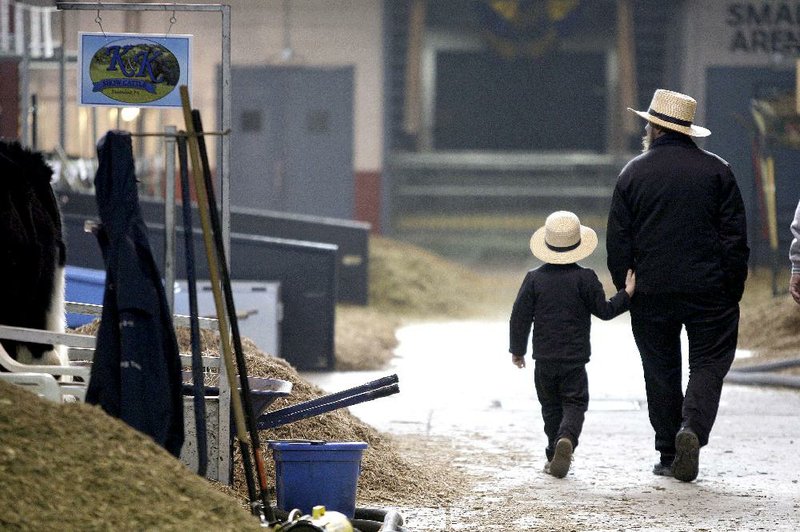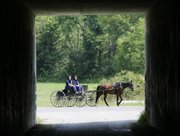HARRISBURG, Pa. -- The Amish branched out last year with new settlements in Bolivia, Argentina and Canada as their numbers continued to grow and a high percentage of young people opted to remain within the religious community, which eschews many modern conveniences.
The sect's total current population is about 308,000 and has grown about 18 percent over the past five years, according to an ongoing population survey by the Young Center for Anabaptist and Pietist Studies at Elizabethtown College in Pennsylvania.
The two small South American settlements were founded last fall after longstanding Mennonite communities in those countries reached out to North American Amish to explore affiliation, said Steven Nolt, a senior scholar at the center who helped coordinate the population survey.
Those Old Colony Mennonites, culturally conservative and with roots in a group that emigrated from the old Russian empire to Canada in the 1800s, left Canada in the 1920s over a dispute about teaching their children in English and landed in Mexico and other parts of Latin America, Nolt said.
In recent years, their members in Bolivia and Argentina have faced financial problems and isolation, so they wrote to an Amish publisher in Canada and eventually got in touch with a New Order Amish group in Ohio that permits its members, under certain circumstances, to make airplane trips.
After ministers with the Ohio Amish visited South America, they sent two families to settle there to create communities the existing Mennonites can join. North American Amish generally do not proselytize or do mission work. They also have sent teams to help with building projects. The Bolivian community, known as Colonia Naranjita, is about 75 miles southwest of Santa Cruz, while the settlement in rural northwestern Argentina is located east of Catamarca.
"This is kind of a new and different thing and illustrates [an] unusually -- even among the New Order Amish -- Amish approach to taking in new members," Nolt said. He said Mennonite men in those areas have begun to grow Amish-type beards, and an Ohio Amish woman has made bonnet head coverings for the women.
Nearly two-thirds of all Amish live in three U.S. states -- Ohio, Pennsylvania and Indiana -- although there are currently settlements in 31 states and three Canadian provinces. Two new settlements with a total of about 30 people were established this year in Prince Edward Island, Canada, a first for that province.
The largest settlements are in Lancaster County, Pa., and Holmes County, Ohio, both with more than 34,000 people and more than 200 congregations, or districts, as they are known.
The total Amish population was only 124,000 in 1992.
The population study includes horse-and-buggy Amish, but not car-driving groups such as Beachy Amish and Amish Mennonites.
The center says Amish typically strike out and establish new communities to find quality and affordable farmland in isolated areas near other Amish, to live where there is work in specialized occupations and to resolve disputes about church leadership.
The Amish are Christian followers known for using horses and buggies for transportation, wearing traditional dress, worshipping in homes -- not church buildings -- and speaking a German dialect. Their ranks are composed of dozens of distinct groups with different practices they allow or prohibit.
Religion on 07/02/2016

